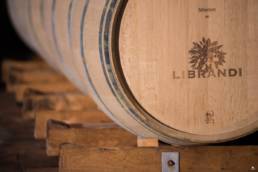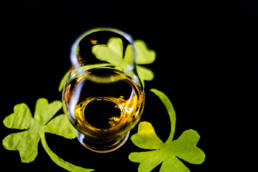FMN – January 2020 – Avoiding the Wine Tariffs
The New Year brings a fresh start, opportunity and, unfortunately, tariffs. Without making this a political column, which it will never be, I see both sides of the argument. It has been my experience, however, when politics and the beverage industry cross paths, the consumer bears the brunt (and pays the extra cost).
All these ‘new’ tariffs arise from the World Trade Organization decision that the EU violated laws by illegally subsidizing Airbus Corporation at the disadvantage of the US based Boeing. Thus, the US was allowed to impose tariffs to retaliate. Although many food items were affected, obviously wine will have the furthest reaching economic impact.
Fear not, there are ways to drink around the tariffs that can secure the wine style you desire without further damage to your post-holiday wallet. France, Germany, Spain and the UK are the main ones affected due to the location of the Airbus corporate offices, but other wine producing regions of Europe (Italy, Portugal, and Austria) remain unaffected. So our first strategy is to drink wines from non-tariffed European countries.
This strategy works better in a large metropolitan market where smaller producing areas may be easier to find (Moldova, Romania, Israel, Greece, and Hungary to name a few). Italy is the largest wine producing country by volume so these wines will be readily available and, better yet, unaffected. So you can still quaff your light crisp Pinot Grigios, sip your Chianti with fava beans (insert Hannibal Lecter sounds), or even pontificate the tar-and-roses aromatics of Barolo without concern.
For those of the German-loving ilk, you are in luck. Austria produces many of the same styles of wine as Germany and from nearly all the same grape varieties, plus the interesting native Grüner Veltliner. I actually fine some of the Austria dessert wines even more satisfying than their German counterparts.
The second option involves seeking wines from non-European countries. The choices and styles are vast with this option. Your regretfully described ‘cat pee on a gooseberry bush’ Sauvignon Blanc from New Zealand will still be flowing unscathed, satisfying the acidophilic white wine lovers. Lest not forget the interesting styles of Kiwi Pinot Noir from Marlborough, Martinborough and Central Otago that will entertain the palates of the ‘lighter’ red lovers.
From there we have a short journey to Australia to find a variety of wines and styles that will surely satisfy whatever you fancy. The white wines of Australia often wrongfully play second fiddle to their aggressively marketed red brethren. The Rieslings of Clare Valley and Eden Valley are distinctively different but both amazing in their own right. Adelaide Hills offers Sauvignon Blanc every bit as herbaceous as New Zealand with the addition of ripe opulent fruit. Finally, one of my favorites, the seductive Semillon from Hunter Valley has the ability to improve in bottle for a decade or more.
For the red lovers, the obvious choice remains the Shiraz and Shiraz blends found all over Australia. The ever sought after Pinot Noir has also found a home in some of the cooler climate regions down under. In Victoria both the Yarra Valley and Mornington Peninsula have some excellent examples. South Australia’s Adelaide Hills and even Tasmania offer Pinot that maintains the earthy elegance with some added spice nuance.
There are other obvious (and some not so obvious) choices throughout the world. For my continued red seeking friends we have the Malbec and Bordeaux blends of Argentina, Carménère of Chile, Tannat of Uruguay, and Pinotage of South Africa. Additional whites can include the Bordeaux, Rhone style blends and the infamous Chenin Blanc of South Africa to the floral Argentinian Torrontés.
Our third option, and ever present, are the domestic wines of the good ‘ole US of A. The vastness of the domestic wine market is staggering. Even ruling out non-vinifera varieties and hybrids, we have a tremendous variety to choose from in our own back yard (sometimes literally). To our detriment, we get hung up on the popular areas like the Cabernet and Cabernet blends from California (Napa, Sonoma), Pinot Noir from Oregon, Syrah from Washington State and Reisling from New York.
Although these wines are quite good and their quality well proven, there are so many good wines being made in unusual places and in unusual ways. I invite you to try some of the Rhone Style blends of the Rhone Rangers in California, the Pinot Gris from Oregon or even Ripasso style white and red wines from Yadkin Valley, NC. The list is endless and ever changing, which makes the discovery so much fun.
Though I provided a nauseam of regions and varieties, I plan to take the next few articles to meander through some of these options to provide better and more precise drinking guidance. So whether you decide to alter your regions in order to avoid the higher prices or stock up on your favorite pre-tariff wines, we can all survive this consumption set back. Keep your drinking like your contemplations, broad and frequent.
Suggested Wines:
Klinker Brick Albariño 2017 Lodi, California $16.99
Albariño has long been associated with northeastern Spain and being adopted and trialed by other countries. This version from Lodi (Mokelumne River AVA) has a refreshingly moderate abv at 12.8%. The nose has aromas of white peach, melon, citrus and saline. The dry palate has mouth-watering acidity, medium plus body with citrus (tangerine), firm minerality and a saline finish. Pair with anything from the ocean (shrimp, clams) or creamy cheeses (brie). A nice treat with only 2000 cases produced.
Ken Forrester Petit Chenin Blanc 2018 Western Cape, South Africa $11.99
This 100% Chenin Blanc from the Western Cape has aromas of white plum, apple, and some tropical citrus (lime zest) and melon. The palate is dry with lively acidity and a medium plus body. There are flavors of tart citrus, melon and a crisp clean finish. Initially the wine was a bit closed but 5 minutes in the glass made a world of difference. This honestly is one of the best I’ve had at this price; an absolute ridiculous value. Pair with lighter poultry dishes, chicken piccata, citrus marinated shrimp or just the kids going back to school.
Spy Valley Southern Valleys Pinot Noir 2015 Marlborough, New Zealand $22.99
The nose has varietally true aromatics with crunchy red fruit (cherry, cranberry), an earthy element (dried autumn leaves) and a baking spice. The palate is dry (even with reported 1.2 g/L residual sugar) with tart acidity, medium body, medium intensity and a well-integrated fine grained tannin structure. The finish is simple but elegant. This is what I view as an exceptional version of a New Zealand Pinot Noir drinking well above this price point. Pair with foul dishes (especially with thyme or sage), mushroom based foods (savory tart) or paté.
County Line Syrah 2014 Sonoma Coast, California $30.99
There is a dichotomy of Syrah / Shiraz styles and this wine is appropriately named as the Syrah suggests a more French expression vs. Australia. This wine is a side project of Eric Sussman, the creator of the cult wine Radio-Coteau (word of mouth) and his vast experience shows through here. The nose is complex and elegant with aromas of red fruit (raspberry), black fruit (blackberry), baking spice, graphite, floral (lavender), and spice (peppercorn). The acid-forward palate has a medium body, well balanced alcohol and fine grained ripe tannins. Pair with marinated grilled lamb chops, steak au poive, and a quiet room (meditation wine).
Vietti Perbacco Nebbiolo 2016 Langhe DOC, Piedmont $25.99
This 100% Nebbiolo was declassified from Barolo as almost a second label (at a fraction of the cost). The nose has classic dark cherry, rose petal, sandalwood and dried herbs (dill). The palate has medium plus acidity with medium body and a stalky tannin structure that need aeration and food or a few years of bottle age. This remains a classic expression of what Italian wine can be. Pair with a classic Bolognese, cured meats or really good peperoni pizza.



